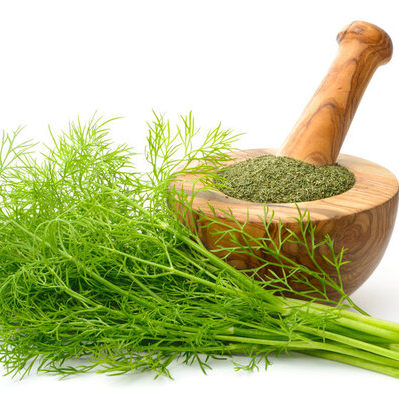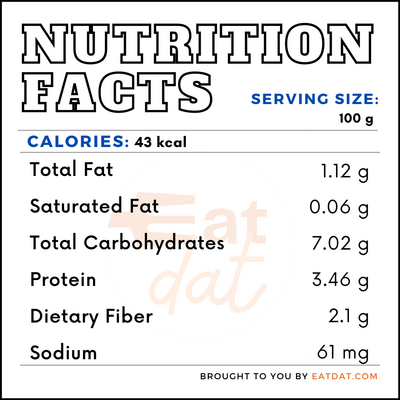
Dill
What is Dill?
Dill is an herbal plant that has leaves and seeds that are used as a seasoning or spice. This herb is used both fresh or dried and has a mild grassy taste with notes of anise and licorice, while the seeds taste more like caraway seeds. This herb is used as a garnish and in pickling various dishes to add flavor.
- It can help craft flavorful sauces, as well.
- This herb can also be used as an essential oil and is widely used in the food industry as a natural preservative in order to prevent spoilage.
There are different cultivars of herb, the most popular include:
- Bouquet
- Delikat
- Dukat
- Long Island Mammoth
- Vierling
- Hercules
- Fernleaf
- Mammoth
- Tetra
Origin of dill
The name means ‘to soothe’ and is likely a result of the plant being commonly used to calm down colicky babies. It is believed that the earliest use of this herb was probably in ancient Egypt around 5,000 years ago. It also grew in Babylon around 3,000 years ago. Ancient Romans and ancient Greeks used this as a medicinal herb. In colonial America, the seeds from this herb were known as meetinghouse seeds because of their use in churches during long services to keep patrons awake. This plant also has a long history as a medicinal herb in ancient India and ancient China.
Nutrition
100 g of this herb can contain:

This herb is rich in vitamins A and C, as well as folate, iron, manganese, and omega-6 fatty acids. It has long been used in traditional medicine in ancient civilizations due to its healing properties. It can be used in diabetes management. This herb also has antihyperlipidemic, antispasmodic, antihypercholesterolemic, anticancer, antioxidant, antistress, antisecretory, cardioprotective, and diuretic properties.
Commercial production
The main producers and exporters of this herb are India and Pakistan. Egypt, Fiji, Mexico, the Netherlands, the United States, England, and Hungary also produce this herb. This herb is a weed plant that can easily propagate itself. In some countries, it is actually classified as an invasive species. It is an annual plant, which transplants poorly.
This plant requires full sun, as well as moist and fertile soil. This herb can be grown both in the ground and in a pot as a container plant. However, these plants tend to bolt when it gets too hot. When freshly cut, this herb can be stored in the refrigerator for 2 to 3 days. The dry version of this herb is prepared by either drying in the sun or in a dehydrator, after which it is packed in an airtight container.
Dill recipes
This is a versatile herb used to impart flavor to different types of dishes. Here are a few recipes:
- Potato Salad
- Garlic Dill Lentils
- Dill Leaves Stir Fry
- Lemon & Dill Chicken
- Chicken & Mushrooms in Creamy Sauce
- Pickles
- Zucchini Fritters
- Biscuits
- Dip
- Green Beans with Lemon Dill Vinaigrette
- Dill Pesto
- Tzatziki
FDA regulations
This herb falls under the category of generally recognized as safe. The FDA recognizes American or European dill as herbs and seeds from Anethum graveolens L. and the Indian cultivar as the herb and seeds from Anethum sowa, D.C. oils must meet the Food Chemicals Codex specifications. This herb and its derivatives are approved for use as flavoring agents and adjuvants.
References
Watson, Molly. “Use Dill as Both an Herb and a Spice.” The Spruce Eats, The Spruce Eats, 15 Jan. 2020, www.thespruceeats.com/all-about-dill-4117140.
Najaran, Zahra Tayarani, et al. “Dill (Anethum Graveolens L.) Oils.” Essential Oils in Food Preservation, Flavor and Safety, Academic Press, 30 Oct. 2015, www.sciencedirect.com/science/article/pii/B9780124166417000456.
Janeen Wright, Essential Guide to Dill, Herb Society of America
https://www.herbsociety.org/file_download/inline/0191822e-0527-4cac-afb6-99d2caab6b78
Zahra Tayarani Najaran, Mohammad K. Hassanzadeh, Maryam Nasery, Seyed Ahmad Emami, Chapter 45 – Dill (Anethum graveolens L.) Oils, Editor(s): Victor R. Preedy, Essential Oils in Food Preservation, Flavor and Safety, Academic Press, 2016, Pages 405-412, ISBN 9780124166417, https://www.sciencedirect.com/science/article/pii/B9780124166417000456
Anethum graveolens (dill), Invasive Species Compendium, Centre for Agriculture and Bioscience International, https://www.cabi.org/isc/datasheet/3472#tosummaryOfInvasiveness
Plant of the Week: Anethum graveolens, Dill, Division of Agriculture, Research & Extension, University of Arkansas
https://www.uaex.edu/yard-garden/resource-library/plant-week/Anethum-graveolens-Dill-06-10-2016.aspx
Goodarzi, Mohammad Taghi et al. “The Role of Anethum graveolens L. (Dill) in the Management of Diabetes.” Journal of tropical medicine vol. 2016 (2016): 1098916. doi:10.1155/2016/1098916, https://www.ncbi.nlm.nih.gov/pmc/articles/PMC5088306/
